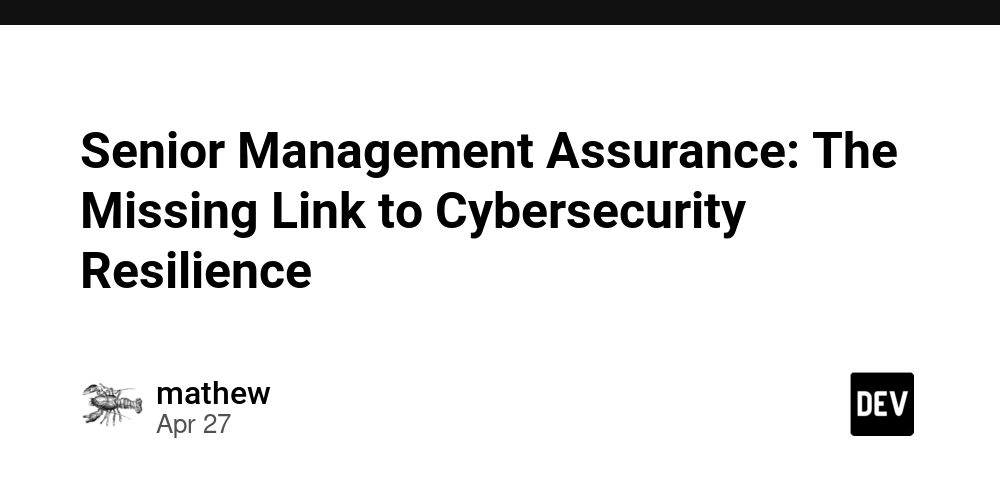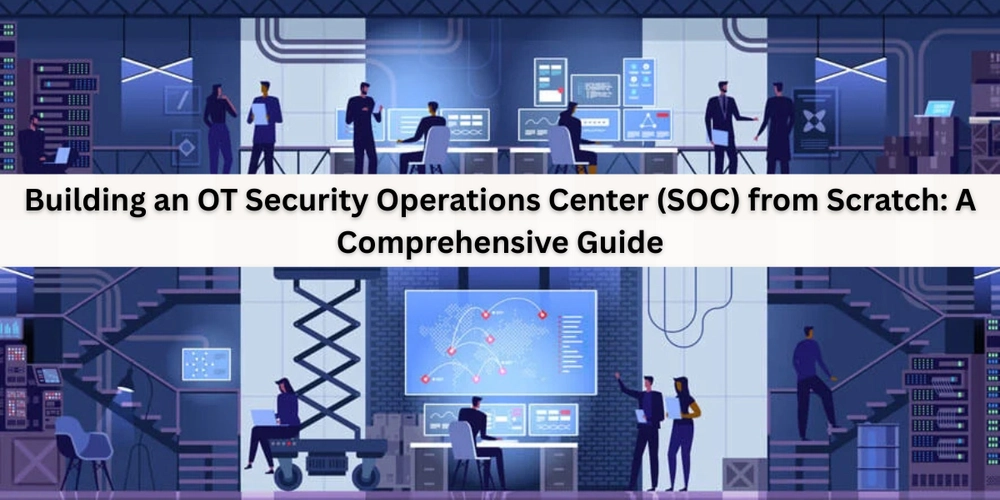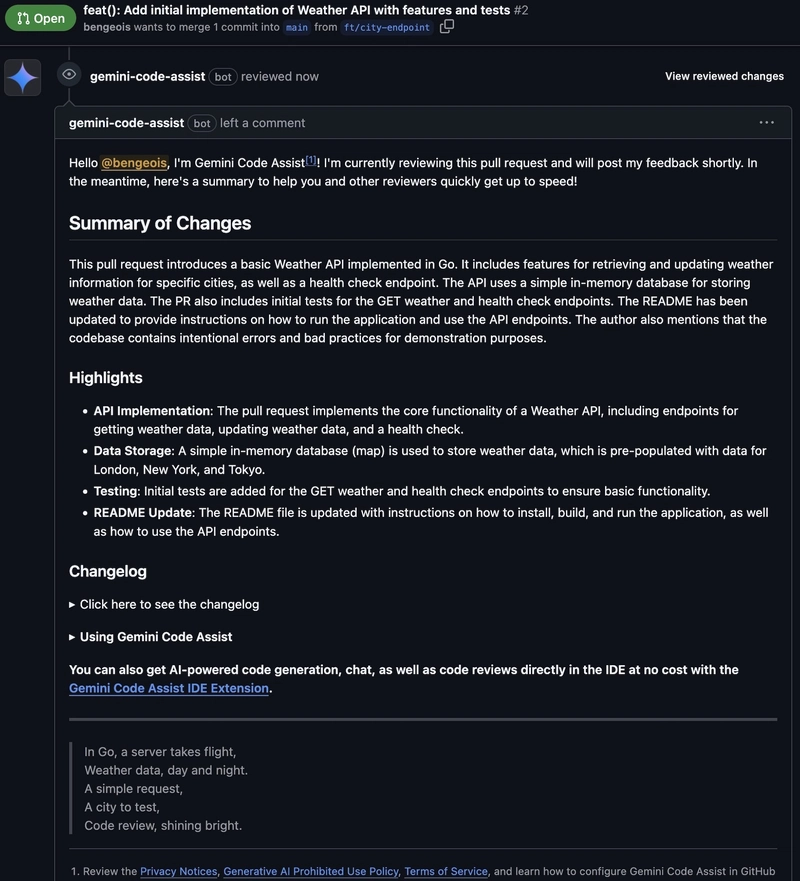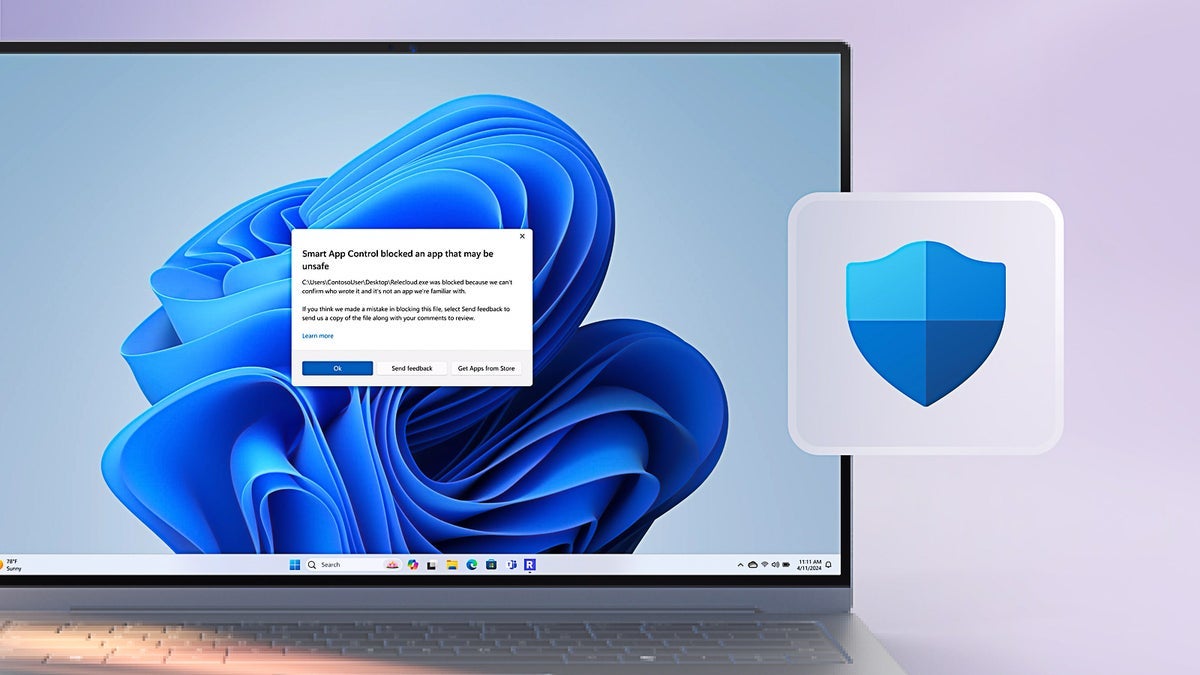Senior Management Assurance: The Missing Link to Cybersecurity Resilience
It was a regular Monday morning board meeting. Reports were flying across the table — quarterly revenues, expansion plans, talent acquisition updates. Everything seemed under control — until the Chief Information Security Officer (CISO) took the floor. With a grave tone, she reported a breach: customer data had been compromised, operations disrupted, reputations bruised. The room fell silent. And as the conversation unfolded, one thing became painfully clear: the board had underestimated the importance of Senior Management Assurance in their cybersecurity strategy. Why Cyber Threats Demand Executive Involvement Gone are the days when cybersecurity could be treated solely as an IT issue. Today, threats have evolved — and so must the defense. Sophisticated ransomware, supply chain attacks, insider risks, and nation-state threats don't just compromise systems; they shake the very foundations of businesses. Modern cyber resilience demands Cybersecurity Leadership at the top. When executives fail to engage meaningfully with cyber risk management, the business exposes itself to more than just technical vulnerabilities — it risks financial stability, regulatory penalties, shareholder trust, and long-term reputation. Cyber risks are now board-level risks. Without Executive Assurance, Cyber Governance remains fragile. Without Senior Management Security frameworks, response efforts lack direction. And without Leadership Cyber Risk Management, organizations are left scrambling when the inevitable strikes. Cybersecurity Assurance must start — and stay — in the boardroom. The Hidden Risks of Passive Leadership Many leadership teams, despite best intentions, unknowingly create blind spots in cybersecurity. Here's what happens when Senior Management Cybersecurity is treated as an afterthought: Risk Oversight Gaps: Without Risk Assurance from the top, vulnerabilities across supply chains, cloud environments, and critical systems remain unnoticed — until exploited. Disjointed Strategies: When management and IT speak different languages, cybersecurity initiatives lack cohesion, investment, and executive advocacy. Compliance Risks: Whether it's GDPR, NESA, HIPAA, or ISO standards — without Board-Level Cybersecurity commitment, organizations may fall short in compliance, facing fines and reputational damage. Delayed Response and Recovery: Crisis management falters when leadership is unclear about their roles in an incident. A delayed response could turn a manageable breach into a catastrophic disaster. In short: Security Assurance Services are not just about technology — they’re about governance, accountability, and leadership. The Shift: How Senior Leadership Changes the Game Organizations that embed Senior Management Assurance into their cyber strategy unlock powerful benefits. Let’s take a few real-world scenarios: Case Study 1: Financial Services Firm Fortifies Cyber Governance A leading financial services company suffered a phishing attack that bypassed email filters and tricked employees into transferring funds to malicious accounts. Following the incident, senior executives decided to directly oversee cybersecurity initiatives. They invested in Cloud Assurance Services, adopted executive-level cyber risk dashboards, and held quarterly cyber resilience simulations. Within a year, phishing incidents dropped by 60%, and the organization passed all regulatory audits with commendations. Case Study 2: Manufacturing Giant Strengthens Board-Level Cybersecurity A global manufacturing firm realized its supply chain vendors were its weakest link. Through Executive Risk Assurance programs, the leadership restructured procurement policies to include mandatory cybersecurity assessments. The board personally reviewed critical supplier risks quarterly. Result? Vendor breaches decreased significantly, and insurance premiums were negotiated lower due to their improved risk posture. Why Microminder Leads the Way in Senior Management Assurance At Microminder Cyber Security, we believe cybersecurity resilience is a leadership responsibility — not just a technical function. Our Senior Management Assurance services empower executive teams to: Understand Cyber Risks in Business Terms: We translate technical threats into strategic, financial, and operational impacts — tailored for leadership understanding. Build a Culture of Cyber Accountability: From the boardroom to the break room, we help instill a culture where security is everyone's business — starting with leadership. Strengthen Cyber Governance Frameworks: We assist in aligning cybersecurity with corporate governance best practices, ensuring proactive risk oversight. Enhance Executive Incident Readiness: Through tabletop exercises and crisis simulations designed for executives, we ensure leadership knows exactly how to respond when incidents occur.

It was a regular Monday morning board meeting. Reports were flying across the table — quarterly revenues, expansion plans, talent acquisition updates. Everything seemed under control — until the Chief Information Security Officer (CISO) took the floor.
With a grave tone, she reported a breach: customer data had been compromised, operations disrupted, reputations bruised. The room fell silent.
And as the conversation unfolded, one thing became painfully clear: the board had underestimated the importance of Senior Management Assurance in their cybersecurity strategy.
Why Cyber Threats Demand Executive Involvement
Gone are the days when cybersecurity could be treated solely as an IT issue.
Today, threats have evolved — and so must the defense. Sophisticated ransomware, supply chain attacks, insider risks, and nation-state threats don't just compromise systems; they shake the very foundations of businesses.
Modern cyber resilience demands Cybersecurity Leadership at the top. When executives fail to engage meaningfully with cyber risk management, the business exposes itself to more than just technical vulnerabilities — it risks financial stability, regulatory penalties, shareholder trust, and long-term reputation.
Cyber risks are now board-level risks.
Without Executive Assurance, Cyber Governance remains fragile. Without Senior Management Security frameworks, response efforts lack direction. And without Leadership Cyber Risk Management, organizations are left scrambling when the inevitable strikes.
Cybersecurity Assurance must start — and stay — in the boardroom.
The Hidden Risks of Passive Leadership
Many leadership teams, despite best intentions, unknowingly create blind spots in cybersecurity.
Here's what happens when Senior Management Cybersecurity is treated as an afterthought:
Risk Oversight Gaps: Without Risk Assurance from the top, vulnerabilities across supply chains, cloud environments, and critical systems remain unnoticed — until exploited.
Disjointed Strategies: When management and IT speak different languages, cybersecurity initiatives lack cohesion, investment, and executive advocacy.
Compliance Risks: Whether it's GDPR, NESA, HIPAA, or ISO standards — without Board-Level Cybersecurity commitment, organizations may fall short in compliance, facing fines and reputational damage.
Delayed Response and Recovery: Crisis management falters when leadership is unclear about their roles in an incident.
A delayed response could turn a manageable breach into a catastrophic disaster.
In short: Security Assurance Services are not just about technology — they’re about governance, accountability, and leadership.
The Shift: How Senior Leadership Changes the Game
Organizations that embed Senior Management Assurance into their cyber strategy unlock powerful benefits. Let’s take a few real-world scenarios:
Case Study 1: Financial Services Firm Fortifies Cyber Governance
A leading financial services company suffered a phishing attack that bypassed email filters and tricked employees into transferring funds to malicious accounts.
Following the incident, senior executives decided to directly oversee cybersecurity initiatives.
They invested in Cloud Assurance Services, adopted executive-level cyber risk dashboards, and held quarterly cyber resilience simulations.
Within a year, phishing incidents dropped by 60%, and the organization passed all regulatory audits with commendations.
Case Study 2: Manufacturing Giant Strengthens Board-Level Cybersecurity
A global manufacturing firm realized its supply chain vendors were its weakest link.
Through Executive Risk Assurance programs, the leadership restructured procurement policies to include mandatory cybersecurity assessments.
The board personally reviewed critical supplier risks quarterly.
Result? Vendor breaches decreased significantly, and insurance premiums were negotiated lower due to their improved risk posture.
Why Microminder Leads the Way in Senior Management Assurance
At Microminder Cyber Security, we believe cybersecurity resilience is a leadership responsibility — not just a technical function.
Our Senior Management Assurance services empower executive teams to:
Understand Cyber Risks in Business Terms: We translate technical threats into strategic, financial, and operational impacts — tailored for leadership understanding.
Build a Culture of Cyber Accountability: From the boardroom to the break room, we help instill a culture where security is everyone's business — starting with leadership.
Strengthen Cyber Governance Frameworks: We assist in aligning cybersecurity with corporate governance best practices, ensuring proactive risk oversight.
Enhance Executive Incident Readiness: Through tabletop exercises and crisis simulations designed for executives, we ensure leadership knows exactly how to respond when incidents occur.
































































































































































![[The AI Show Episode 143]: ChatGPT Revenue Surge, New AGI Timelines, Amazon’s AI Agent, Claude for Education, Model Context Protocol & LLMs Pass the Turing Test](https://www.marketingaiinstitute.com/hubfs/ep%20143%20cover.png)
































































































































![[DEALS] Koofr Cloud Storage: Lifetime Subscription (1TB) (80% off) & Other Deals Up To 98% Off – Offers End Soon!](https://www.javacodegeeks.com/wp-content/uploads/2012/12/jcg-logo.jpg)
















































































































-RTAガチ勢がSwitch2体験会でゼルダのラスボスを撃破して世界初のEDを流してしまう...【ゼルダの伝説ブレスオブザワイルドSwitch2-Edition】-00-06-05.png?width=1920&height=1920&fit=bounds&quality=70&format=jpg&auto=webp#)























_roibu_Alamy.jpg?width=1280&auto=webp&quality=80&disable=upscale#)











































































































![M4 MacBook Air Drops to Just $849 - Act Fast! [Lowest Price Ever]](https://www.iclarified.com/images/news/97140/97140/97140-640.jpg)
![Apple Smart Glasses Not Close to Being Ready as Meta Targets 2025 [Gurman]](https://www.iclarified.com/images/news/97139/97139/97139-640.jpg)
![iPadOS 19 May Introduce Menu Bar, iOS 19 to Support External Displays [Rumor]](https://www.iclarified.com/images/news/97137/97137/97137-640.jpg)








































































































